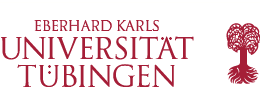Bachelor and Master Theses
Doing your BSc/MSc theses in the Experimental Cognitive Science group
If you are interested in doing your BSc or MSc thesis in the
Experimental Cognitive Science group, please do the following:
- Have a look at our research page, where we give an overview of our current research topics.
- Attend our colloquium (please feel free to come only to those sessions that are of most interest to you).
- Contact our group members to discuss potential topics. Best would be right after one of our colloquium sessions, but you can also contact us via email, of course.
Specific topics
Pupil responses as windows of sequence processing
When people observe a sequence of sounds or visual patterns, they
learn the underlying regularities and generate expectations. When
these expectations are violated (e.g., in transitions such as
ABCABC → CCCCC), the pupil dilates; reflecting a phasic arousal
response. This project aims to investigate if pupil reveals a
window on sequence processing of individuals.
You will work with an eye-tracker and collect data of pupil size
and gaze locations, preprocess and analyze pupil size recordings
using python, and use statistical analyses to quantify individual
differences in response patterns.
You can find the details about this line of research here: Can eyes be surprised? The project is supervised by Hamit Basgol. Send an email if you are interested in!
Perception of body motion from primate and human avatars
This is an external BSc thesis (or lab rotation), which
could be held in the lab of Prof. M. Giese. Please find here more
information.

